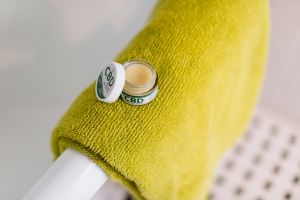- HOME
- > Blog Main Page
- > Patenting Cannabis in the United States
Patenting Cannabis in the United States

by Skyelar Reel
The expansion of the legal usage of cannabis in states throughout the US emphasizes the relevance of intellectual property protection as with any new and expanding industry. Thus, it is natural that the cannabis industry would seek to obtain protection for their inventions as soon as possible, just like anyone else.
However, since cannabis is still listed as a Schedule I drug under the Controlled Substances Act and illegal under federal law, obtaining a patent can pose some significant challenges (“Drug Scheduling”).
Fortunately, when applying for a patent, the inventor is not required to prove that the product is lawfully used in the US. (South). The patent will simply enforce the right of the owner to exclude others from practicing the invention.
The previous Plant Patent Act of 1930 acknowledged the difficulties with patents and plants, such as “unpatentable products of nature” and inadequacy to describe plants with words (South). It also established that “asexually-reproduced plants” or plants reproduced could be patented. However, despite this, plants have very limited patent protection.
If infringement occurs, the patent holder must prove the alleged infringer used asexual-reproduction and the “reproduced plant is genetically identical to its parent;” thus, sexual reproduction provides infringers an easy way out (South). Furthermore, due to the difficulty in describing the usage of the product, applicants may deposit biological material, such as a seed, to “satisfy the written description requirements” (Baldwin).
The USDA established the Plant Variety Protection Act of 1970 (“PVPA”) which “provides a breeder with protection for sexually-reproduced plants” (South). It does, however, require “applicants to submit at least 3,000 seeds to a depository at Fort Collins, Colorado” (South). From here, breeders encounter the dilemma of whether or not to hand over their product to a federal agency.
Another alternative is utility patents, which provide protection for sexually and asexually reproduced plants as well as formulations and other products from the plant in the cannabis industry. However, the broader range of protection under utility patents poses some challenges such as a “more rigorous written description requirement” as well as enable others “to make and use the invention,” also known as the enablement requirement (South).
The enablement requirement poses the largest challenge in that it can be difficult for an applicant to provide sufficient detail about their invention’s plant parts, tissues, cells, and more.
For example, when BioTech Institute LLC attempted to obtain a patent, the USPTO rejected its application on the grounds that it failed “to satisfy the enablement requirement” (South). The USPTO acknowledged that the company failed to provide information about how others may be able to grow the exact same plant; thus, it is not readily available to the public.
Furthermore, due to the difficulty of enabling others to make the plant, an inventor may provide biological material at a publicly-accessible location approved by the USPTO (Baldwin). This allows the public the ability to obtain a sample of the biological material and reproduce the plant once the patent expires.
While intellectual property protection in the cannabis industry is possible, there are many challenges an applicant may face when considering what type of protection they want. However, cannabis patent protection is possible and can be quite effective, especially as the cannabis industry continues to expand.
References:
South, Clinton, and Brian Shortell. “Patenting Cannabis: Possibilities and Pitfalls.” IPWatchdog.com | Patents & Patent Law, 11 Feb. 2020, www.ipwatchdog.com/2020/02/07/patenting-cannabis-possibilities-pitfalls/id=118615/.
“Drug Scheduling.” DEA, www.dea.gov/drug-scheduling.
Baldwin, Alison, et al. “Protecting Cannabis – Are Plant Patents Cool Now?” JD Supra, 6 Dec. 2017, www.jdsupra.com/legalnews/protecting-cannabis-are-plant-patents-34919/.
Landau, Nicholas J., and James W. Wright. “Difficulties Face Cannabis Patents, Trademarks, and Other Forms of Intellectual Property.” Bradley, 30 Apr. 2019, www.bradley.com/insights/publications/2019/04/difficulties-face-cannabis-patents-trademarks-a nd-other-forms-of-intellectual-property.

TAGS:
RECENT POSTS
